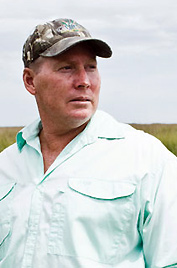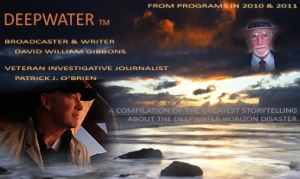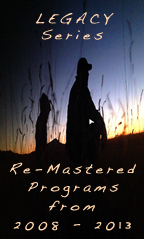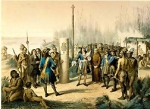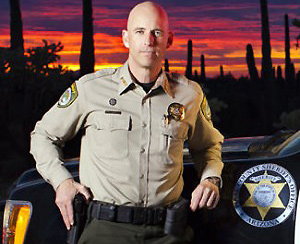January 26, 2014 Commemorative program dedicated to the life of Investigative Journalist and American Patriot Patrick J. O’Brien
Listen/view program.
January 26, 2014. Commemorative program dedicated to the life of Investigative Journalist and American Patriot Patrick J. O’Brien. With dedications from distinguished guests including Matt Kibbe President of FreedomWorks and Scott Porter Investigative Biologist
Patrick J. O’Brien – Investigative Journalist & Producer (2009 – 2013)
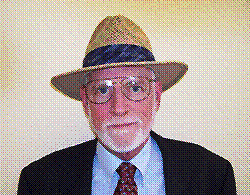 Pat O’Brien had over 40 years of experience in radio/ TV news, advertising and marketing after gaining a B.S. degree from Ithaca College in Broadcast Communication Management. In the 1980’s he experienced such success with Burger King Corporation that his reputation led to being sought after by Wendy’s to consequently help develop the “Where’s the Beef” campaign in 1983. He also worked for two of the top three advertising agencies in Florida, managing 100’s of advertising account budgets. As a broadcast professional he worked in TV and radio news hosting many talk radio programs. He worked for Clear Channel Communications providing news to some 55 radio stations in Florida. During the last decade of his life he also worked diligently in the Indoor Air Quality & Surface Protection Industry. O’Brien made the decision to establish a company in fighting the “Cross-Contamination of Infectious Diseases” including MRSA, AIDS, E. coli, Salmonella, and over 100 viruses. This followed a fight for his life after contracting and surviving MRSA while in a Florida hospital; the result of a simple blood test. He formed AirTech Solutions 4u, Inc. a Sub-Chapter “S” 90% Disabled Vietnam Veteran Owned Florida Corporation in October of 2006. The firm became dedicated to helping reduce disease in Haiti by 85% after the devastating earthquake. It was during this period he discovered that donations promised to the people of Haiti were not being awarded to companies for the recovery effort. He also became suspicious that generous contributions and promises of government relief efforts were somehow being prevented from quickly aiding the recovery of that nation.
Pat O’Brien had over 40 years of experience in radio/ TV news, advertising and marketing after gaining a B.S. degree from Ithaca College in Broadcast Communication Management. In the 1980’s he experienced such success with Burger King Corporation that his reputation led to being sought after by Wendy’s to consequently help develop the “Where’s the Beef” campaign in 1983. He also worked for two of the top three advertising agencies in Florida, managing 100’s of advertising account budgets. As a broadcast professional he worked in TV and radio news hosting many talk radio programs. He worked for Clear Channel Communications providing news to some 55 radio stations in Florida. During the last decade of his life he also worked diligently in the Indoor Air Quality & Surface Protection Industry. O’Brien made the decision to establish a company in fighting the “Cross-Contamination of Infectious Diseases” including MRSA, AIDS, E. coli, Salmonella, and over 100 viruses. This followed a fight for his life after contracting and surviving MRSA while in a Florida hospital; the result of a simple blood test. He formed AirTech Solutions 4u, Inc. a Sub-Chapter “S” 90% Disabled Vietnam Veteran Owned Florida Corporation in October of 2006. The firm became dedicated to helping reduce disease in Haiti by 85% after the devastating earthquake. It was during this period he discovered that donations promised to the people of Haiti were not being awarded to companies for the recovery effort. He also became suspicious that generous contributions and promises of government relief efforts were somehow being prevented from quickly aiding the recovery of that nation.
 At approximately the same time, the Deepwater Horizon oil spill in the Gulf occurred. Within a day after the disaster, one of his product vendors called him and said they had an environmentally-safe product that could solve the oil issue. In trying to introduce this product to the BP Corporation, he felt strongly that he was being stonewalled first by BP, and then by the Deepwater Horizon representatives. This led him on an investigative trail that uncovered the dispersant product BP had continued to use in the Gulf of Mexico. A very toxic product to humans and highly harmful to the delicate ecosystems of the Gulf. As the story continued to unravel around the plight of the Haitians, combined with the untold complexity surrounding the Gulf oil spill, unanswered questions slowly began to link many of the issues that the mainstream media was not exposing. As fortune would have it, he had the opportunity to work with David William Gibbons to further develop the story as a journalist. Since the disaster that robbed the souls of eleven in the Gulf of Mexico, he dedicated himself to finding answers and solutions to the BP spill. As he and his research team discovered and verified that the dispersant product being used by BP was a poison that had been banned for use in the UK since 1998. He felt an obligation to reveal their findings to the world by joining the David Gibbons “In Discussion” program later to become DG Networks.
At approximately the same time, the Deepwater Horizon oil spill in the Gulf occurred. Within a day after the disaster, one of his product vendors called him and said they had an environmentally-safe product that could solve the oil issue. In trying to introduce this product to the BP Corporation, he felt strongly that he was being stonewalled first by BP, and then by the Deepwater Horizon representatives. This led him on an investigative trail that uncovered the dispersant product BP had continued to use in the Gulf of Mexico. A very toxic product to humans and highly harmful to the delicate ecosystems of the Gulf. As the story continued to unravel around the plight of the Haitians, combined with the untold complexity surrounding the Gulf oil spill, unanswered questions slowly began to link many of the issues that the mainstream media was not exposing. As fortune would have it, he had the opportunity to work with David William Gibbons to further develop the story as a journalist. Since the disaster that robbed the souls of eleven in the Gulf of Mexico, he dedicated himself to finding answers and solutions to the BP spill. As he and his research team discovered and verified that the dispersant product being used by BP was a poison that had been banned for use in the UK since 1998. He felt an obligation to reveal their findings to the world by joining the David Gibbons “In Discussion” program later to become DG Networks.
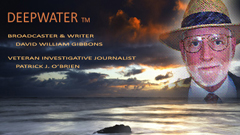 Patrick J. O’Brien was an American Patriot whose commitment to his country will be forever remembered by those who knew him. Following service in Vietnam he graduated in broadcast journalism working in the advertising and broadcast industries for many years. He was also a passionate entrepreneur managing a football team as part of his portfolio. His health was compromised for most of his adult life following traumatic experiences in Vietnam. This period in the early 1970’s led to psychological and physical issues. However, his devotion to those serving in the armed forces remained steadfast, reflected by his support in local veteran facilities where he himself received medical treatment. In 2009 his work and significant contribution to radio broadcasting at DG Networks became profound. Until his passing in 2013 an invaluable contribution was made in producing and leaving behind over 30 hours of recordings charting the Deepwater Horizon disaster. As a staunch republican delicately balanced with foresight and experience he also supported radio programming with David Gibbons covering distinguished guests including Sheriff Joe Arpaio, Sheriff Paul Babeu and Matt Kibbe President of FreedomWorks among many others. In the Fall of 2013 he was appointed an honorary member (posthumous) of Universal One Broadcasting with the approval of Lady Fiona Montagu of Beaulieu Co-founder of the organization. He is survived by his beloved wife Beverly who was instrumental as a researcher during the Deepwater reporting.
Patrick J. O’Brien was an American Patriot whose commitment to his country will be forever remembered by those who knew him. Following service in Vietnam he graduated in broadcast journalism working in the advertising and broadcast industries for many years. He was also a passionate entrepreneur managing a football team as part of his portfolio. His health was compromised for most of his adult life following traumatic experiences in Vietnam. This period in the early 1970’s led to psychological and physical issues. However, his devotion to those serving in the armed forces remained steadfast, reflected by his support in local veteran facilities where he himself received medical treatment. In 2009 his work and significant contribution to radio broadcasting at DG Networks became profound. Until his passing in 2013 an invaluable contribution was made in producing and leaving behind over 30 hours of recordings charting the Deepwater Horizon disaster. As a staunch republican delicately balanced with foresight and experience he also supported radio programming with David Gibbons covering distinguished guests including Sheriff Joe Arpaio, Sheriff Paul Babeu and Matt Kibbe President of FreedomWorks among many others. In the Fall of 2013 he was appointed an honorary member (posthumous) of Universal One Broadcasting with the approval of Lady Fiona Montagu of Beaulieu Co-founder of the organization. He is survived by his beloved wife Beverly who was instrumental as a researcher during the Deepwater reporting.
“The Gulf of Mexico Disaster” – The Deep Water Horizon MACADO 252 Disaster
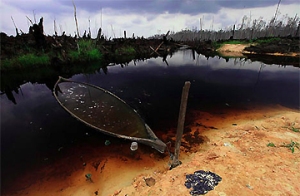 The Deepwater Horizon oil spill (also referred to as the BP oil spill, the Gulf of Mexico oil spill or the Macondo blowout) was a massive ongoing oil spill in the Gulf of Mexico, now considered the largest offshore spill in U.S. history. Some estimates placed it by late May or early June of 2010 as among the largest oil spills in the world with tens of millions of gallons spilled to date. The spill stems from a sea floor 10,000 foot deep oil gusher (MC252) that followed the April 20, 2010 Deepwater Horizon drilling rig explosion. The explosion killed 11 platform workers and injured 17 others. The gusher, estimated at the time by the quasi-official Flow Rate Technical Group flowing at 20,000 to 40,000 barrels (840,000 to 1,700,000 US gallons; 3,200,000 to 6,400,000 litres) of crude oil per day, originates from a deepwater wellhead 5,000 feet (1,500 m) below the ocean surface. The exact spill flow rate was uncertain in part because BP refused to allow independent scientists to perform accurate measurements and is a matter of ongoing debate. The resulting oil slick covered a surface area of at least 2,500 square miles (6,500 km2), with the exact size and location of the slick fluctuating from day to day depending on weather conditions at the time.
The Deepwater Horizon oil spill (also referred to as the BP oil spill, the Gulf of Mexico oil spill or the Macondo blowout) was a massive ongoing oil spill in the Gulf of Mexico, now considered the largest offshore spill in U.S. history. Some estimates placed it by late May or early June of 2010 as among the largest oil spills in the world with tens of millions of gallons spilled to date. The spill stems from a sea floor 10,000 foot deep oil gusher (MC252) that followed the April 20, 2010 Deepwater Horizon drilling rig explosion. The explosion killed 11 platform workers and injured 17 others. The gusher, estimated at the time by the quasi-official Flow Rate Technical Group flowing at 20,000 to 40,000 barrels (840,000 to 1,700,000 US gallons; 3,200,000 to 6,400,000 litres) of crude oil per day, originates from a deepwater wellhead 5,000 feet (1,500 m) below the ocean surface. The exact spill flow rate was uncertain in part because BP refused to allow independent scientists to perform accurate measurements and is a matter of ongoing debate. The resulting oil slick covered a surface area of at least 2,500 square miles (6,500 km2), with the exact size and location of the slick fluctuating from day to day depending on weather conditions at the time.









